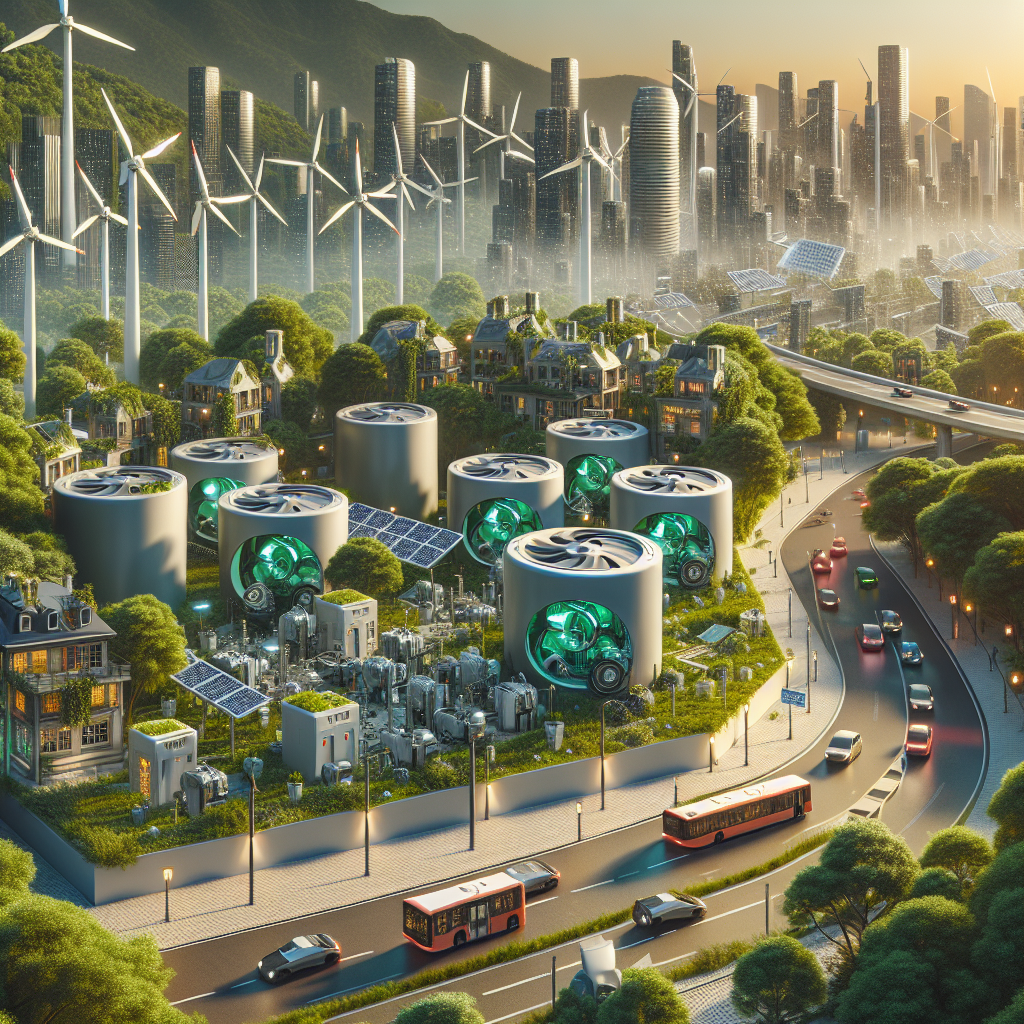The Future of Flywheel Energy Storage in a Sustainable World
As the global community continues to confront the challenges of climate change and environmental degradation, the search for sustainable energy storage solutions has become a paramount concern. Among the myriad of technologies vying for prominence in this green revolution, flywheel energy storage (FES) presents a uniquely promising avenue. With advancements in materials science, engineering, and manufacturing technologies, the future of FES in a sustainable world looks bright, offering a path toward cleaner, more efficient, and more resilient energy storage.
Understanding Flywheel Energy Storage
At its core, flywheel energy storage operates on a simple principle: kinetic energy is stored in a rotating mass and can be converted back into electrical power when needed. This process involves accelerating a flywheel to very high speeds using surplus electricity and then, through the use of an electric generator, converting the kinetic energy back into electricity when the power is required. The efficiency of this process, as well as the energy storage capacity of a flywheel system, depends heavily on the rotational speed of the flywheel and the mass of the rotating body.
Advantages of Flywheel Energy Storage
Flywheel energy storage systems offer several compelling advantages over traditional energy storage technologies. First and foremost is their ability to charge and discharge at high rates, making them ideal for applications that require rapid energy transactions, such as power grid stabilization and frequency regulation. Additionally, FES systems boast a longer lifespan, with the ability to withstand tens of thousands of charge-discharge cycles without significant degradation. They are also environmentally friendly, as they do not involve harmful chemicals or hazardous materials, and their energy efficiency can exceed 90% under optimal conditions.
The Path Towards Sustainability
The integration of flywheel technology into a sustainable energy infrastructure hinges on overcoming certain technological and economic challenges. Material innovation is at the forefront of this endeavor, with research focused on developing lighter, stronger materials for the flywheels themselves, as well as more efficient magnetic bearings and vacuum technology to minimize frictional losses.
In parallel, advancements in renewable energy technologies, such as solar and wind power, offer a synergistic opportunity for flywheel energy storage. By smoothing out the inherent intermittency of these renewable sources, FES can play a critical role in ensuring a stable, reliable energy supply. This capacity to integrate seamlessly with renewable energy systems highlights the pivotal role that FES could play in a future dominated by sustainable energy sources.
Economic Viability and Market Adoption
The economic viability of flywheel energy storage is closely tied to the cost of materials and manufacturing processes. As economies of scale are achieved, and as technological advancements reduce the costs of key components, FES systems are becoming increasingly competitive with other energy storage options. Additionally, regulatory incentives and policies aimed at fostering clean energy solutions can further enhance the economic appeal of flywheel technology.
Market adoption of FES is also facilitated by its versatility. Beyond grid stabilization and renewable energy integration, flywheel systems are finding applications in a range of sectors, including transportation, where they can provide regenerative braking in electric vehicles, and in data centers, where they offer a more sustainable alternative to traditional uninterruptible power supplies.
Challenges and Opportunities
While the outlook for flywheel energy storage in a sustainable world is undoubtedly optimistic, several challenges remain. Technical issues such as the need for improved energy density and the reduction of frictional losses are areas of active research. Economically, the initial investment in FES technology can be high, although this is mitigated over time by the system’s long lifespan and low maintenance requirements.
The future of flywheel energy storage in a sustainable world also hinges on its ability to integrate with the broader energy ecosystem. This includes not just technological compatibility with other forms of renewable energy, but also regulatory and market structures that incentivize the adoption of sustainable energy storage solutions.
FAQs
Q: How does flywheel energy storage work?
A: Flywheel energy storage works by storing energy in the form of kinetic energy in a rotating mass. This stored energy can then be converted back into electrical energy when needed.
Q: What are the main advantages of flywheel energy storage?
A: The main advantages include high charge and discharge rates, long lifespan, environmental friendliness, and high energy efficiency.
Q: Can flywheel energy storage be used with renewable energy sources?
A: Yes, flywheel energy storage can be used to smooth out the intermittency of renewable energy sources like solar and wind power, making it a valuable component of a sustainable energy system.
Q: What are the primary challenges facing flywheel energy storage?
A: The primary challenges include improving energy density, reducing frictional losses, and lowering the initial cost of the technology.
Q: Is flywheel energy storage economically viable?
A: Yes, as technological advancements continue and economies of scale are achieved, flywheel energy storage is becoming increasingly economically viable, especially when regulatory incentives for clean energy are considered.
In conclusion, the future of flywheel energy storage in a sustainable world is laden with both challenges and opportunities. As the global community moves towards a greener, more sustainable energy paradigm, technologies like FES that offer efficient, clean, and reliable energy storage solutions will undoubtedly play a crucial role in this transition.

